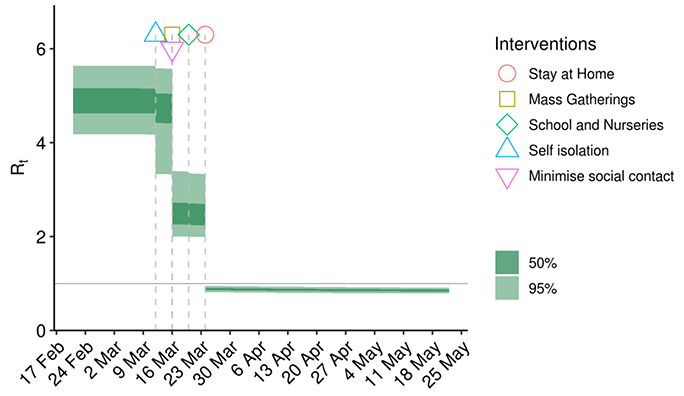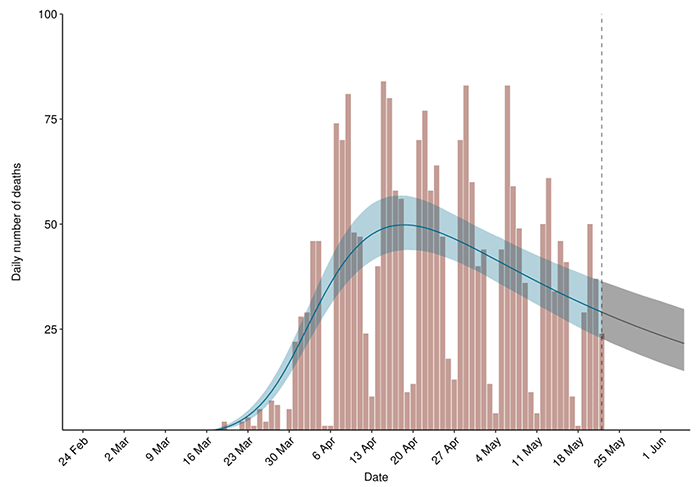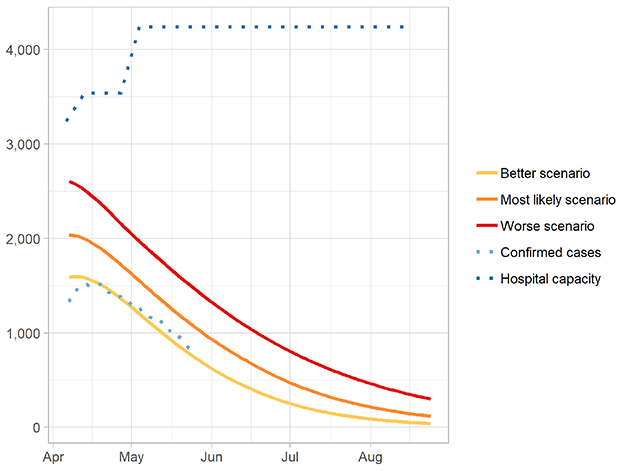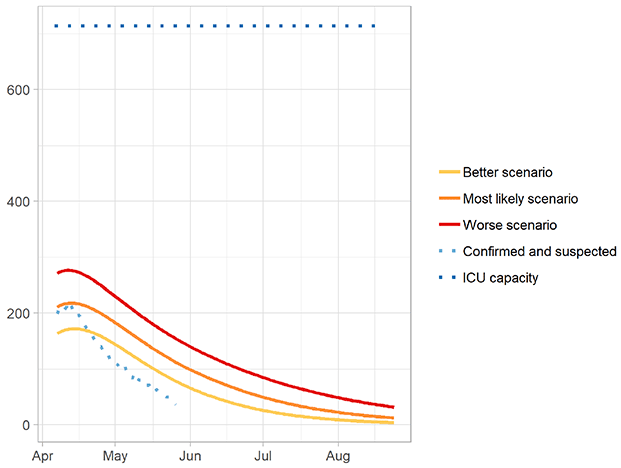Coronavirus (COVID-19): modelling the epidemic (issue no 2)
Report presents the latest findings of the Scottish Government in modelling the COVID-19 epidemic in Scotland, both in terms of the spread of the disease through the population (epidemiological modelling) and of the demands it will place on the system, for example in terms of health care requirement
This document is part of a collection
Coronavirus (COVID-19): modelling the epidemic in Scotland (Issue No 2)
Background
This is an update on the Scottish Government modelling of the spread and level of Covid-19 using data from the week up to the 22 May 2020. This updates the previous publication on modelling the spread and level of Covid-19 in Scotland published on the 21 May 2020 which was based on data up to 8 May 2020. The estimates in this document help the Scottish Government, the health service and the wider public sector plan and put in place what is needed to keep us safe and treat people who have virus, e.g. to decide how many Intensive Care Beds (ICU) we need available for Covid patients.
Key Points
Modelling of the epidemic in Scotland is undertaken to look at the progression of the epidemic and to inform logistical response required.
This is done over two time periods. Short term, for the next two weeks, and longer term. Both these help to forecast Covid-19, which helps the public sector in Scotland plan their response and helps determine if the measures in place are working.
We use the value of R to talk about Covid-19 in Scotland. Up to the 22 May, R in Scotland was estimated to have remained between 0.7 & 1.0.
The modelling shows that the number of infectious people, the number of cases, hospital and ICT use and deaths are all likely to continue to fall over the next two weeks.
These forecasts are based on the current "stay at home" arrangements, and that there would be no change in adherence to these, however, guidance is changing on 28 May, therefore the longer term forecasts will be closely monitored over the next few weeks as this guidance changes.
What the modelling tells us
Figure 1 shows how Rt has changed since February. Before the "stay at home" restrictions were put in place Rt was above 1, and likely to have been between 4 and 6 before any interventions were put in place.
The model estimates the Rt value for Friday 22 May to be between 0.7 and 1.0.

Source: Scottish Government modelled estimates using Imperial College model code,
Source: Actual data from https://www.gov.scot/publications/coronavirus-covid-19-trends-in-daily-data/
The epidemiological model estimates the number of infectious people in Scotland on 22 May to be around 19,000 (see Table 1). Forecasts indicate this number will decline over the following two weeks, but is still at a level that could cause risk to the health service if onwards transmission rose. This figure is lower than was forecast previously, and reflects the fact that the number of deaths last week was lower than expected.
| Estimated Infectious Pool | |||
|---|---|---|---|
| Date | Mid | Lower | Upper |
| 08 May 2020 | 26,000 | 18,000 | 35,000 |
| 15 May 2020 | 22,000 | 15,000 | 31,000 |
| 22 May 2020 | 19,000 | 12,000 | 28,000 |
| 29 May 2020 | 16,000 | 10,000 | 25,000 |
| 05 June 2020 | 14,000 | 8,000 | 22,000 |
Figure 2 shows the epidemiological model forecasts, given the present set of interventions. This epidemic curve continues to show signs of reducing.

Source: Scottish Government modelled estimates using Imperial College model code,
Source: Actual data from https://www.gov.scot/publications/coronavirus-covid-19-trends-in-daily-data/
The medium term forecasts (Figure 3) from the logistics model show a similar story over the next few months, with a steady decline in the number of people requiring a hospital bed from Covid-19.
These forecasts are based on the assumption that the current "stay at home" guidance would remain in place and adherence to them would remain the same. Guidance is changing on 28 May, so we will monitor the impact of these changes in the coming weeks, and how this will affect hospital demand.
The three scenarios presented in Figure 3 are for different levels of infections. In each case, we translate these into logistical forecasts which are used for planning purposes and to check our forecast against actual numbers of cases.

Source: Scottish Government modelled estimates using outputs from the Imperial College model code
Source: Actual data from https://www.gov.scot/publications/coronavirus-covid-19-trends-in-daily-data/
The logistical model also provides us with a medium term forecast of the number of ICU beds which may be required (Figure 4).

Source: Scottish Government modelled estimates using outputs from the Imperial College model code
Source: Actual data from https://www.gov.scot/publications/coronavirus-covid-19-trends-in-daily-data/
What next?
The modelled estimates of hospital and ICU use, and of the reproduction number Rt will be published each week. Further information can be found at: https://www.gov.scot/coronavirus-covid-19
Contact
There is a problem
Thanks for your feedback